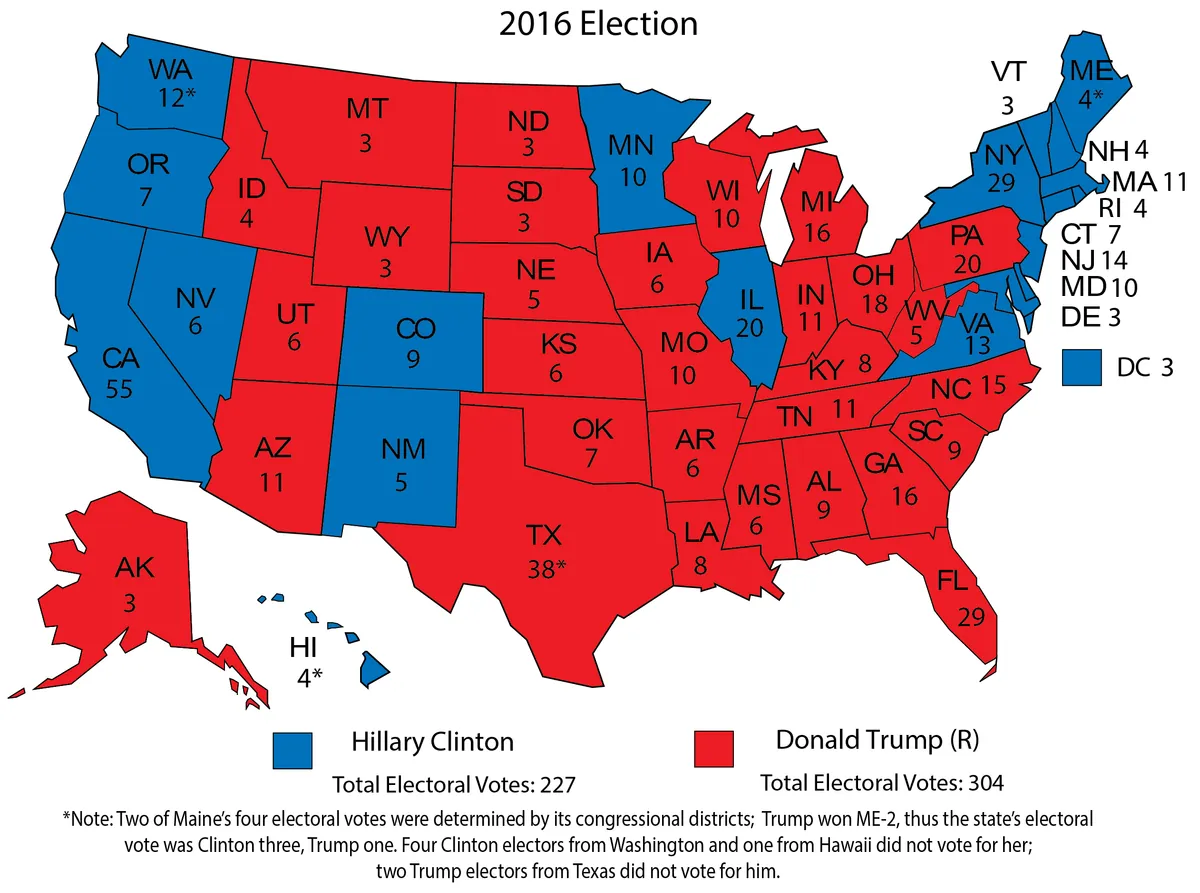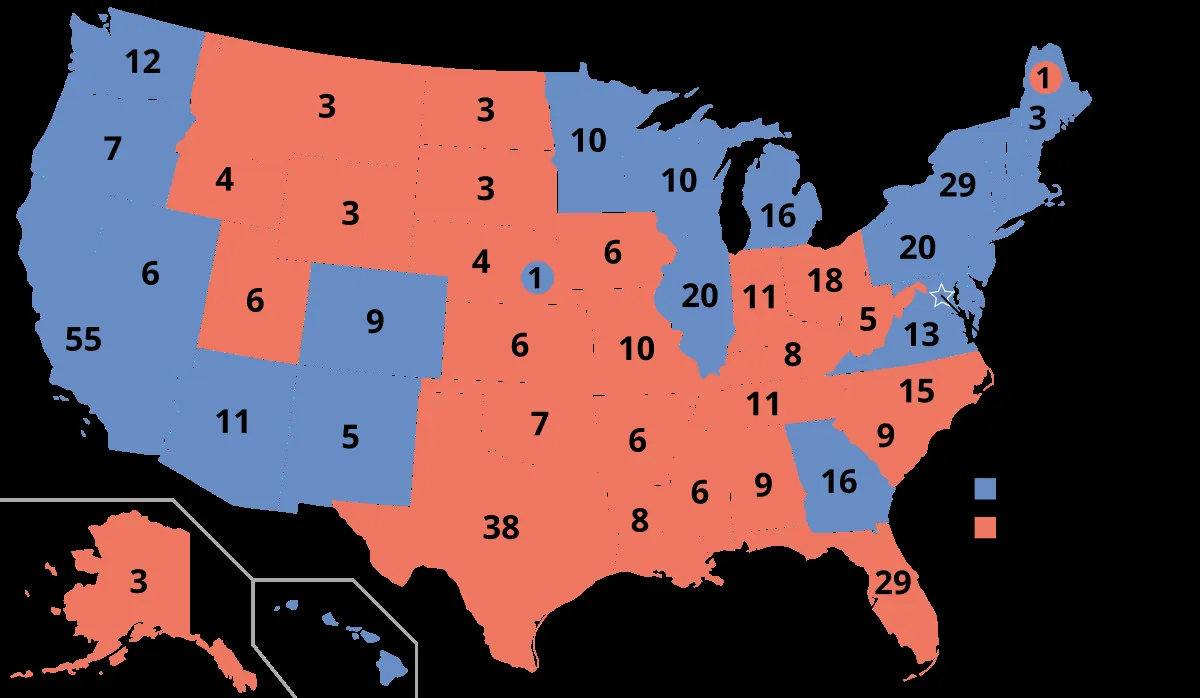US Electoral College: Key Rules for 2024 Presidential Race
The US Electoral College system, not popular vote, determines the presidency. With 538 total votes, a candidate needs 270 to win. Recent reforms aim to prevent controversies in the electoral process.

The United States employs a unique system for selecting its president, known as the Electoral College. This method, established by the Constitution, allocates electoral votes to states based primarily on population. As the 2024 presidential election approaches, understanding this system is crucial.
Kamala Harris and Donald Trump are set to face off on November 5, 2024, in a contest where securing 270 out of 538 electoral votes is the key to victory. Voters in each state will actually be selecting electors pledged to support a particular candidate, rather than directly voting for the candidates themselves.
The distribution of electoral votes among states varies significantly. California, the most populous state, commands 54 electoral votes, while the least populous states and the District of Columbia have the minimum of three. This disparity means that one electoral vote in Wyoming represents about 192,000 people, compared to approximately 730,000 in Texas.

Interestingly, a candidate can become president without winning the popular vote. This occurred in 2000 with George W. Bush and in 2016 with Donald Trump. The system has been both criticized for this possibility and defended for encouraging candidates to seek support across diverse states.
The electoral process follows a specific timeline. Electors will convene on December 17, 2024, to cast their votes officially. Congress will tally these votes on January 6, 2025, with the new president taking the oath of office on January 20, 2025.
While electors typically vote according to their state's popular vote, instances of "faithless electors" have occurred. In 2016, seven electors voted contrary to their state's results, with three casting votes for Colin Powell. To prevent such occurrences, 33 states and the District of Columbia have implemented laws to ensure elector compliance.
The Electoral College system can potentially result in a 269-269 tie. In such a scenario, the newly elected House of Representatives would determine the presidency on January 6, with each state delegation casting a single vote.
Recent reforms have addressed vulnerabilities exposed in the 2020 election. The Electoral Count Reform Act of 2022 clarified the certification process and set a 36-day deadline after the election for states to complete recounts and litigation.
"when three states submitted 'dueling slates of electors' -- one slate certified by the state's lawmakers and a competing slate by a state official."
While the Electoral College remains a topic of debate, any fundamental change would require a constitutional amendment. As the 2024 election approaches, candidates will focus their efforts on battleground states where small shifts in votes can deliver all of a state's electoral votes.


































